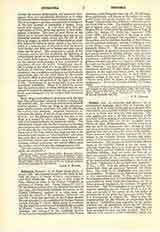

Infessura, STEFANO; b. at Rome about 1435; d. about 1500. He devoted himself to the study of law, took the degree of Doctor of Laws, and acquired a solid legal knowledge. He was for a while judge in Orte, whence he came to the Roman University as professor of Roman law. Under Sixtus IV (1471-84) his office was affected by the financial measures of that pope, who frequently withheld the income of the Roman University, applied it to other uses, and reduced the salaries of the professors. Infessura was also for a long time secretary of the Roman Senate. He was entangled in the conspiracy of Stefano Porcaro against Nicholas V (1453), which aimed at overturning the papal Government and making Rome a republic (Pastor, “Gesch. der Papste”, 4th ed., I, 550 sq.). Infessura also belonged to the antipapal faction, formed among the paganizing Humanists of the Roman Academy under Pomponio Leto (op. cit., II, 322 sqq.). He is particularly well known as the author of a work, partly Latin and partly Italian, the “Diarium urbis mae” (Diario della Citta di Roma), a chronicle of the city from 1294 to 1494. The historical information is not of special value until the time of Martin V and Eugene IV, or rather until the pontificates of Paul II (1464-71), Sixtus IV (1471-84), Innocent VIII (1484-1492), and the first part of the reign of Alexander VI. The antipapal and republican temper of the author, also his partisan devotion to the Colonna, and his personal animosity, led him to indulge in very severe charges and violent accusations of the popes, especially Sixtus IV. He put down in his chronicle every fragment of the most preposterous and malevolent gossip current in Roman society; even obvious falsehoods are attributed to him. He is therefore not considered a reliable chronicler. It is only with the greatest caution and after very careful criticism that his work can be used for the papal history of his time. The “Diarium” was first edited by Eccard (Corpus historicum medii nevi, II, 1863-2016); afterwards, with omission of the most scandalous parts, by Muratori (Scriptores rerum Italicarum, III, ii, 1111-1252); a critical edition of the text is owing to Tommasini, “Diario della Citta di Roma di Stefano Infessura scribasenato” (Fonti per la storia d’Italia, VI, Rome, 1890).
J. P. KIRSCH

